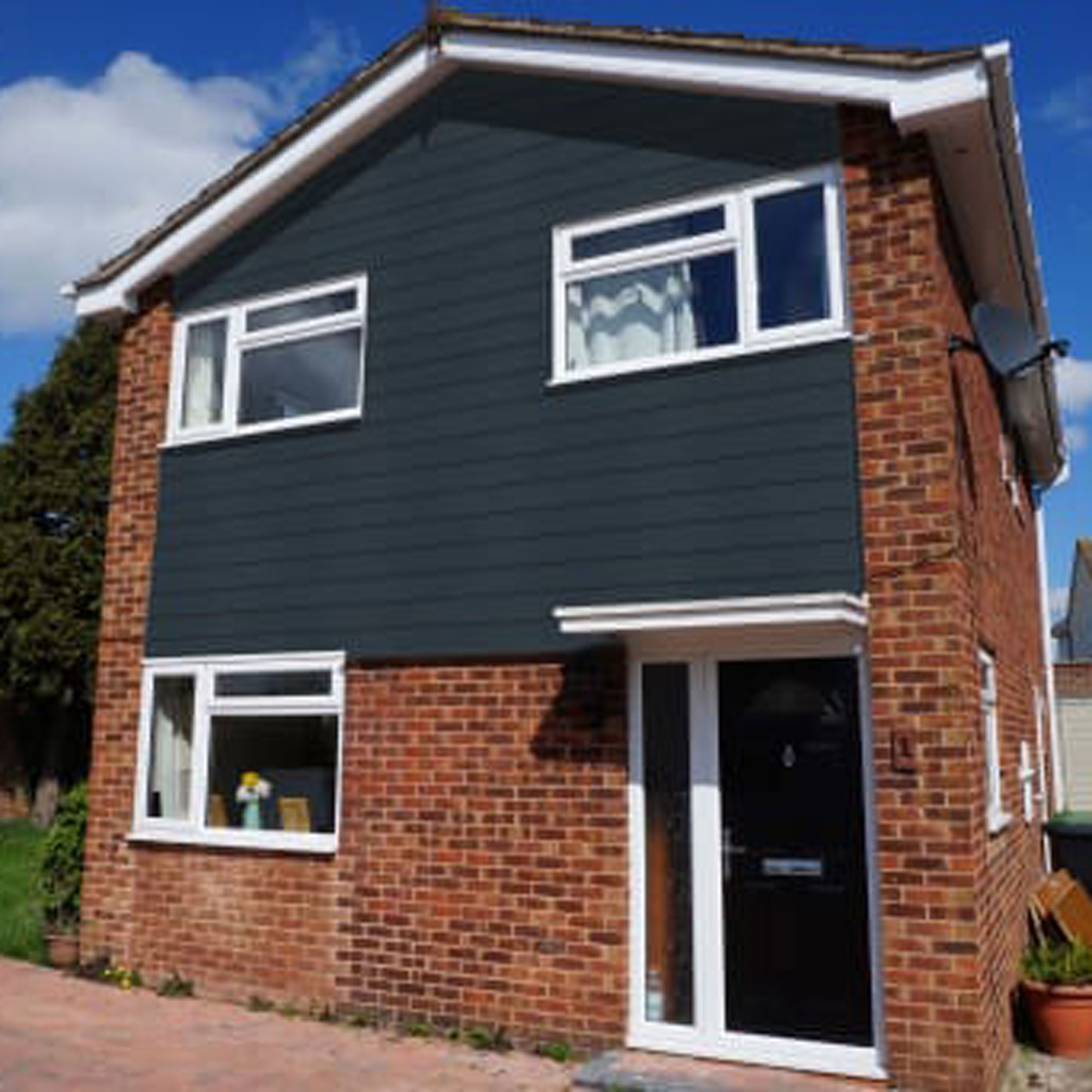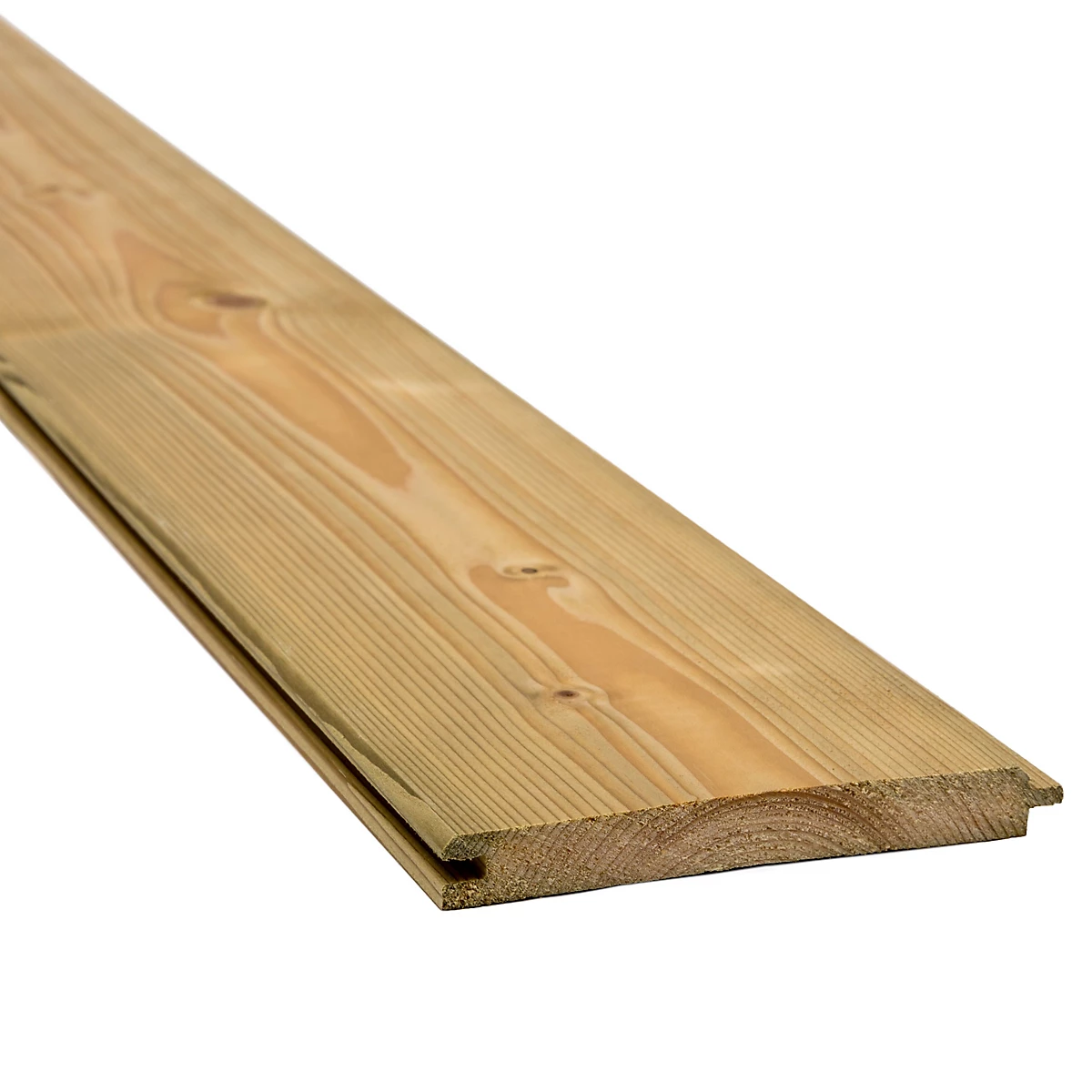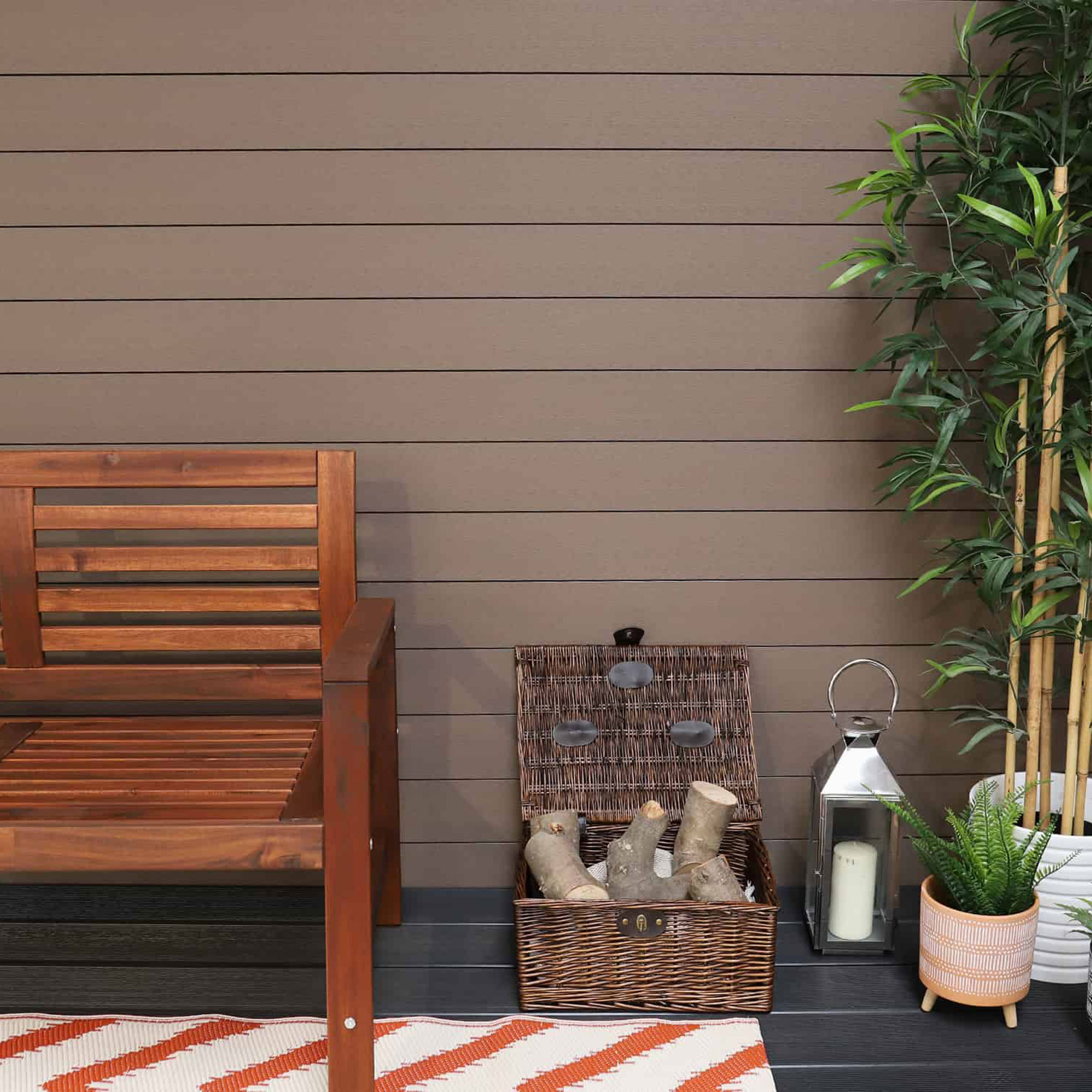5 things to know before cladding your home's exterior
Cladding your home's exterior is a brilliant way to protect your home’s exterior without compromising its aesthetics
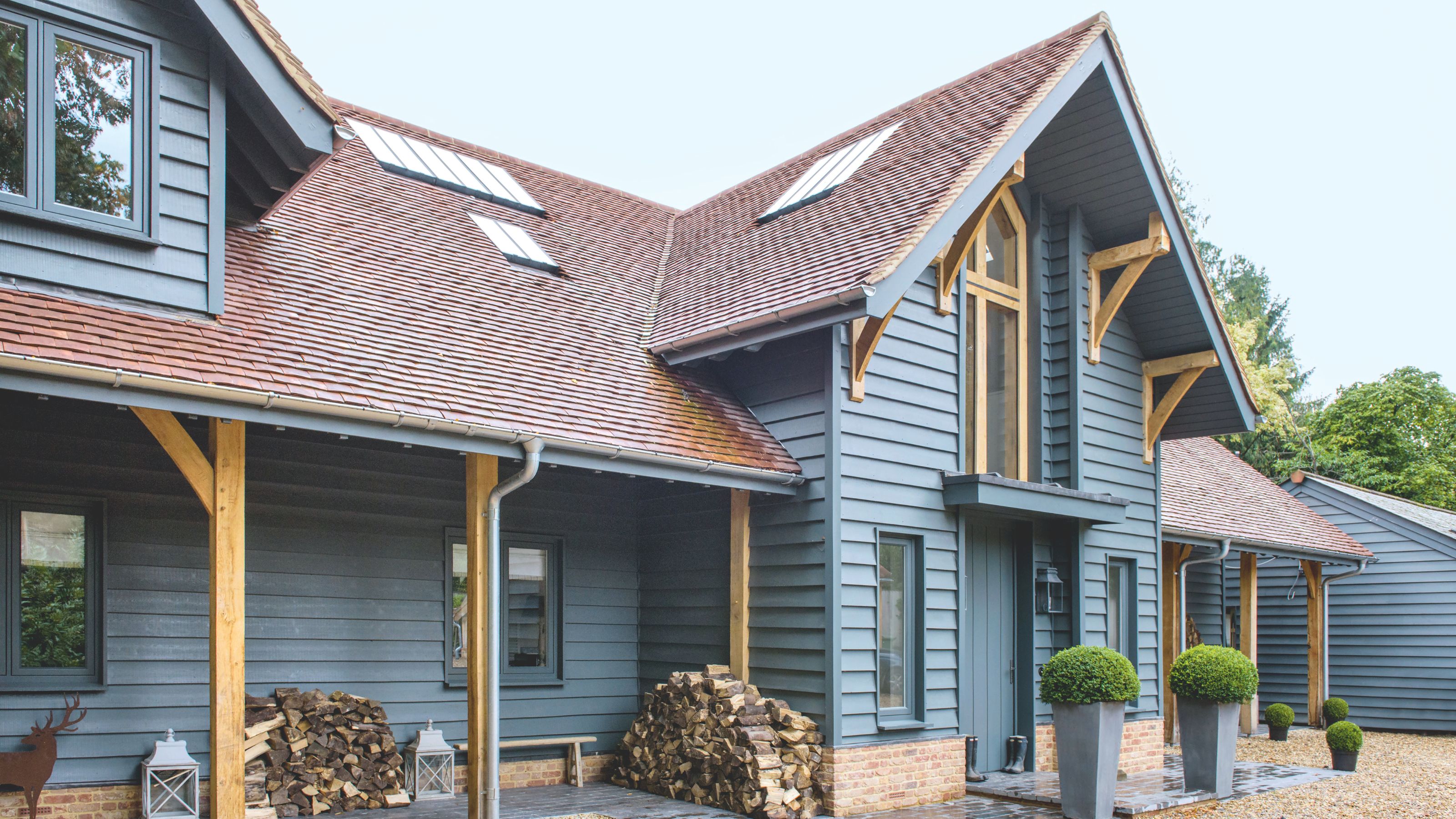

Channelling coastal and country vibes, cladding your home's exterior is a popular and affordable way to update the exterior of your home. It can cover render or brickwork, elevate an understated façade, or help an extension blend in with the rest of the house.
However, the benefits of exterior cladding don't stop there. It can help your home stand up against the elements – particularly valuable for exposed or coastal properties. Cladding also bolsters a property’s insulation.
‘Cladding your home's exterior adds another cavity to the exterior of your home so it helps with noise insulation and improves the building’s thermal properties,’ says Simon Cresswell, director of The Gutter & Cladding Company.
Alongside front door ideas, cladding your home's exterior is one of the best ways to make your house exterior look more expensive. But with something that can completely alter your house's appearance, you want to get it right the first time – after all, everyone can see it!
'The visual appeal of external cladding is one of its main attractions. It allows you to revitalize the exterior of your home and, in many cases, modernise it. This has the advantage of also increasing the kerb appeal and potentially the value of your home,' says Gregory Smith, construction expert at PriceYourJob.co.uk
1. Choosing the right material
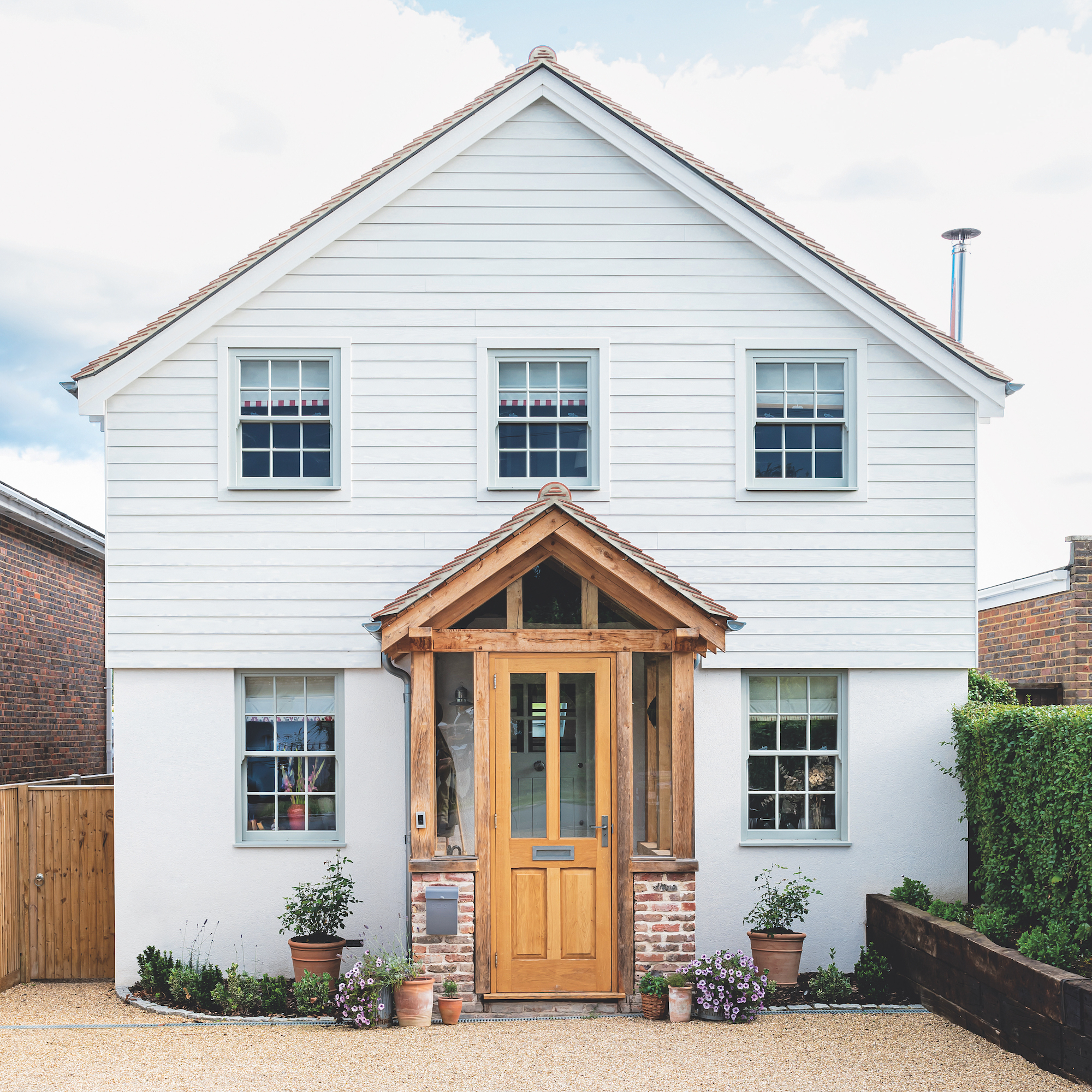
Choosing the right type of cladding will set you up for success.
There are several materials available and the right choice will depend on the look you want to achieve. Cladding options range from paintable render and timber to metal, uPVC and stone.
‘When cladding your home's exterior, consider choosing a material that holds extra benefits. Fibre cement is very popular because it ticks all the boxes. It does not rot, rust, warp or crack; has excellent fire classification; uses fewer raw materials and less energy and generates less waste than some traditional building materials,’ says Lisa Grosse, brand manager at Cedral UK. ‘Request samples of your cladding material and expose them to different natural light, such as sun and evening light, to ensure you are happy before you commit.’
Composite is another popular and sustainable material. ‘Made from recycled wood and plastic, composite takes the best qualities from both materials, namely the look and feel of natural wood grain combined with the easy maintenance and longevity of plastic,’ says Ben Allen, director at NeoTimber. ‘It’s available in a variety of colours and textures, so you can easily find an option to match your home.’
Find out how composite compares to timber cladding with our guide.
2. Know your budget
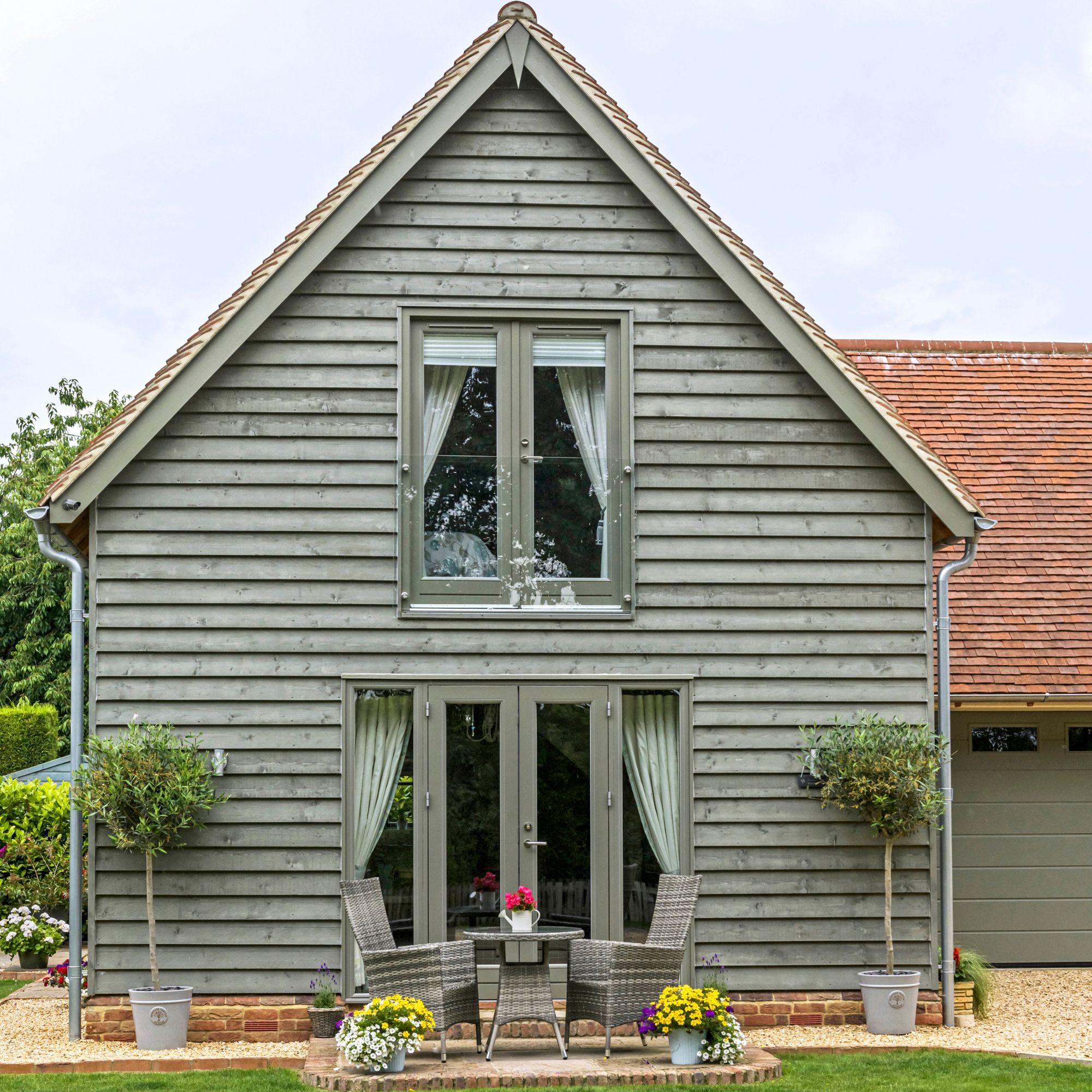
The cost of cladding your home's exterior depends on the quantity of cladding and the materials used. ‘Some companies will have an online calculator to help you budget, but be aware that the installation will also require further costs, and you’ll need to consider extra fees for things like scaffolding,’ says Lisa Grosse from Cedral UK.
Simon Cresswell of The Gutter & Cladding Company advises that an average four-bedroom detached top-half of the house cladding with insulation costs around £12,000.
3. Understand the rules and regulations
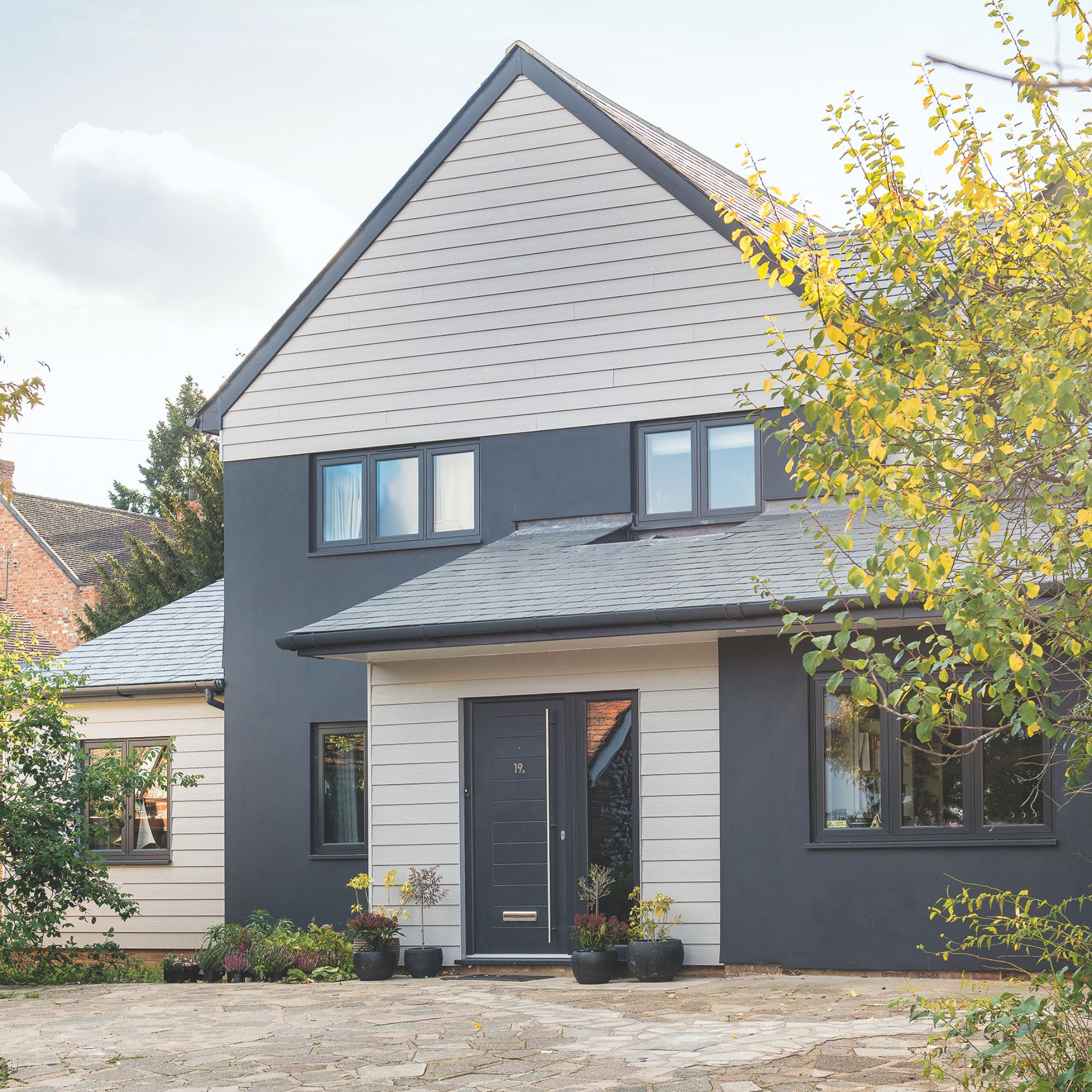
Similar to rendering a house, you do not require planning permission when cladding your home's exterior, as it is usually considered permitted development.
However, if you live in an Area of Outstanding Natural Beauty or a conservation area, or in a listed building, then permission may be required. Contact your local planning authority for advice before starting work.
‘Whether you need planning permission or not, all cladding systems must comply with building regulations, including fire ratings,’ says Gregory Smith at PriceYourJob.co.uk.
‘There are also regulations regarding the energy performance of the renovated shell of your home,’ says Lisa Grosse from Cedral UK. ‘This legislation aims to improve the energy efficiency of buildings and reduce the need for heating in winter and cooling in summer. This has a positive impact on your energy bill, but also on the environment. In some cases, you can get subsidies or green loans for these environmentally friendly investments.’
4. Know how to maintain it
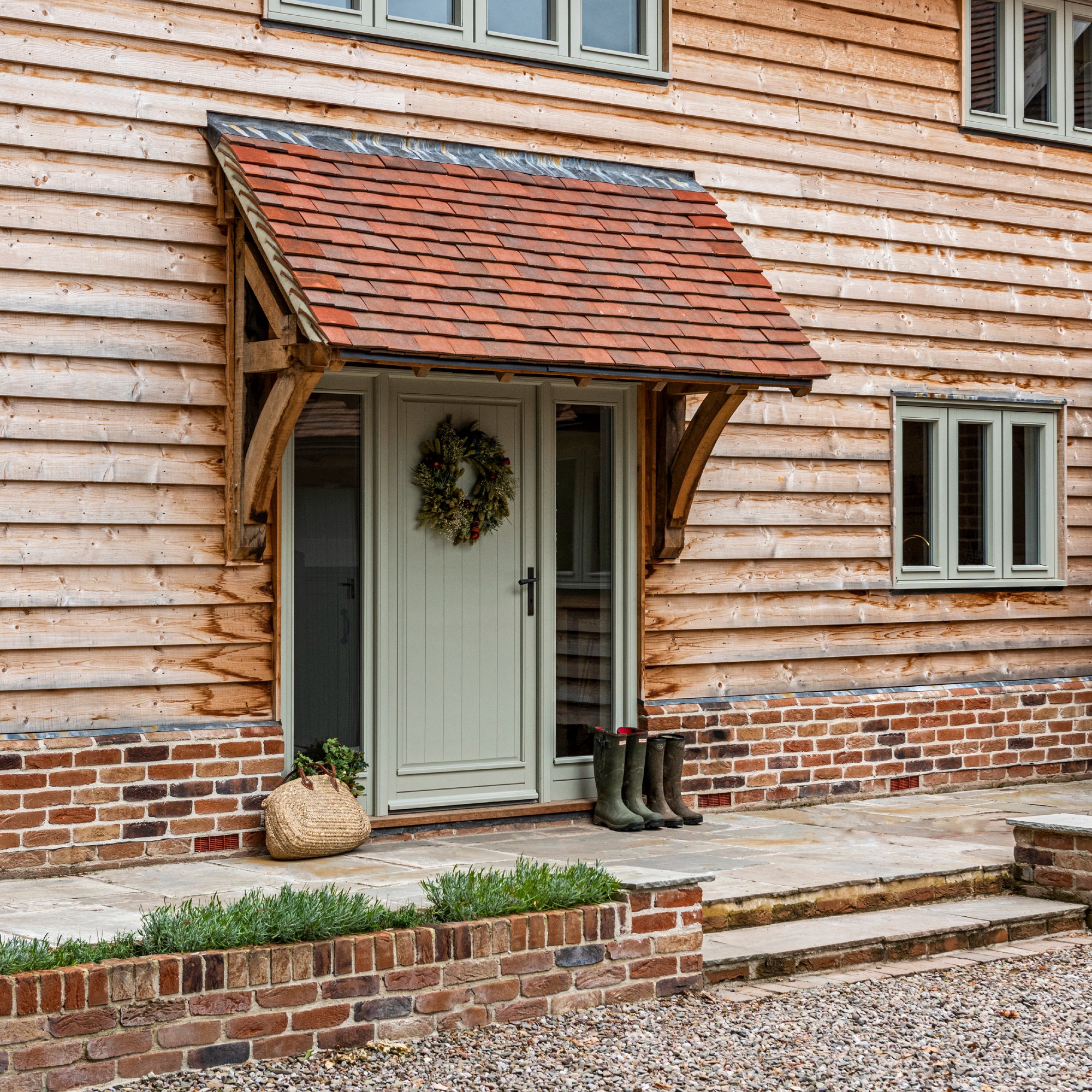
The amount of maintenance you are prepared to do should factor into your choice of material, as each type has its own needs. ‘Composite and uPVC cladding only require washing down to remove dirt and debris, while stone, tiles and fibre cement cladding are practically maintenance-free,’ says Gregory Smith at PriceYourJob.co.uk.
Timber cladding is one of the more demanding materials; however, this
is rewarded by its rich texture and natural beauty. ‘After approximately a year of outdoor exposure, timber cladding will begin to attain silvery-grey tones. This can be offset with treatment,’ says Lisa Grosse from Cedral UK. ‘If you’re keen on retaining your cladding’s original colour, then a semi-transparent stain will drastically slow down the greying process while providing some weatherproofing. On average, timber cladding needs to be treated with exterior paint and finishes every five years.’
5. Ensure your cladding is weatherproof
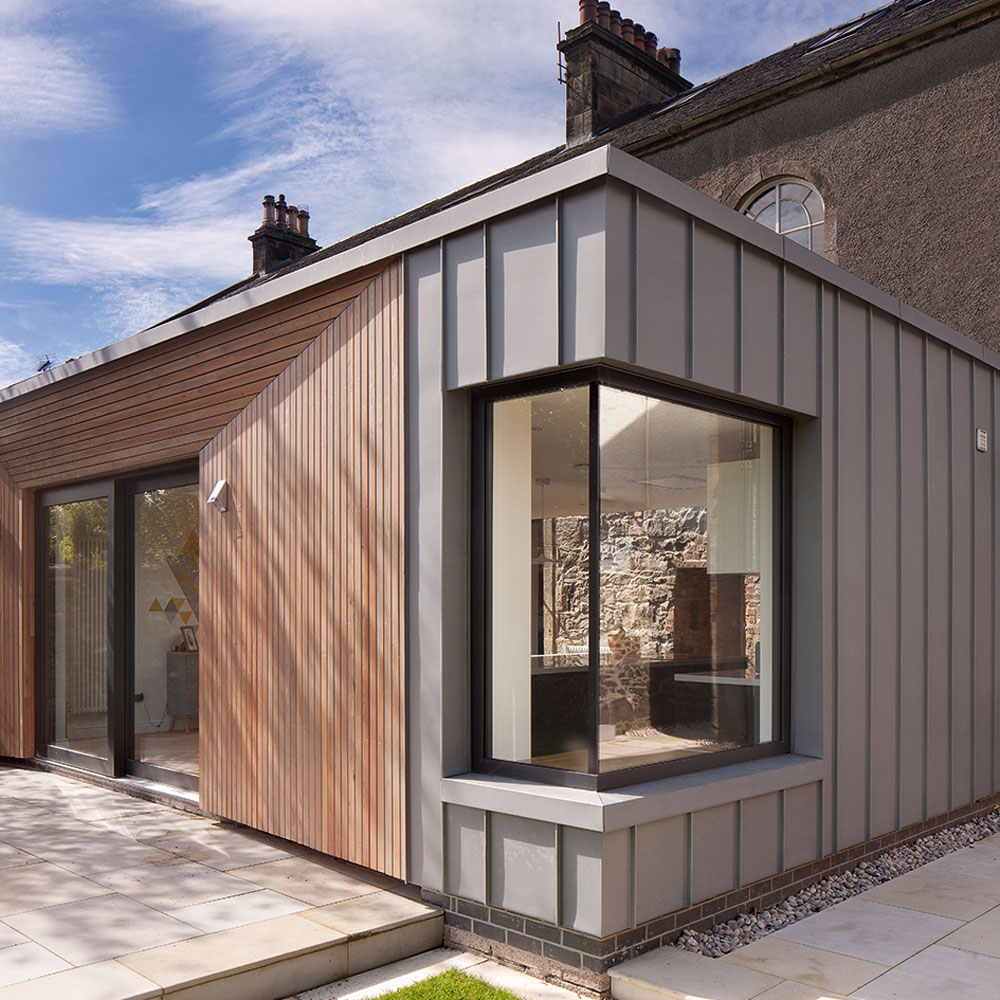
When cladding your home's exterior, it must be waterproof – otherwise, it could lead to damp problems.
'Every type of cladding material has its own water-resistant properties. What you need to do to maximise the protection of your external walls will depend on the cladding option you’ve chosen. Composite, uPVC, stone, and tile cladding have natural water-resistant properties while timber cladding needs to be fabricated from certain wood and appropriately treated,' says Gregory Smith, construction expert at PriceYourJob.co.uk. 'Whichever type of cladding you use, it’s important to ensure all parts of the façade are weatherproof. Fit a breathable membrane behind the cladding and make sure all joints are properly sealed with a waterproof sealant.'
FAQs
Is external cladding a good idea?
Cladding your home's exterior is a good idea as it not only improves the aesthetics of your home but also improves your home's kerb appeal. 'Cladding can offer considerable benefits that will add even more value to your home – particularly important if you’re thinking about re-mortgaging or selling,' adds Lisa Grosse of Cedral UK.
Cladding your home's exterior is also a great energy-saving tip for the home.
What is the best exterior cladding for a house?
Fibre cement cladding is one of the most popular options. 'It does not rot, rust, warp or crack, it has excellent fire classification, uses fewer raw materials and less energy and generates less waste than some traditional building materials,' says Lisa Grosse of Cedral UK.
However, for more traditional homes, you can't beat the rustic appeal of traditional timber – even if it does require more work.
Get the Ideal Home Newsletter
Sign up to our newsletter for style and decor inspiration, house makeovers, project advice and more.

Holly is one of Ideal Home’s content editors. Starting her career in 2018 as a feature writer and sub-editor for Period Living magazine, she has continued this role also adding regular features for Country Homes & Interiors and the Ideal Home website to her roster. Holly has a passion for traditional and country-inspired interiors – especially kitchen design – and is happiest when exploring the countryside and hills of the Lake District. A keen gardener, she is a strong believer that you can never have too many houseplants.
You must confirm your public display name before commenting
Please logout and then login again, you will then be prompted to enter your display name.
-
 Worried your neighbour is attracting rats? What you can legally do
Worried your neighbour is attracting rats? What you can legally doDiscover what steps you can take if your neighbour's habits are causing a rodent issue
-
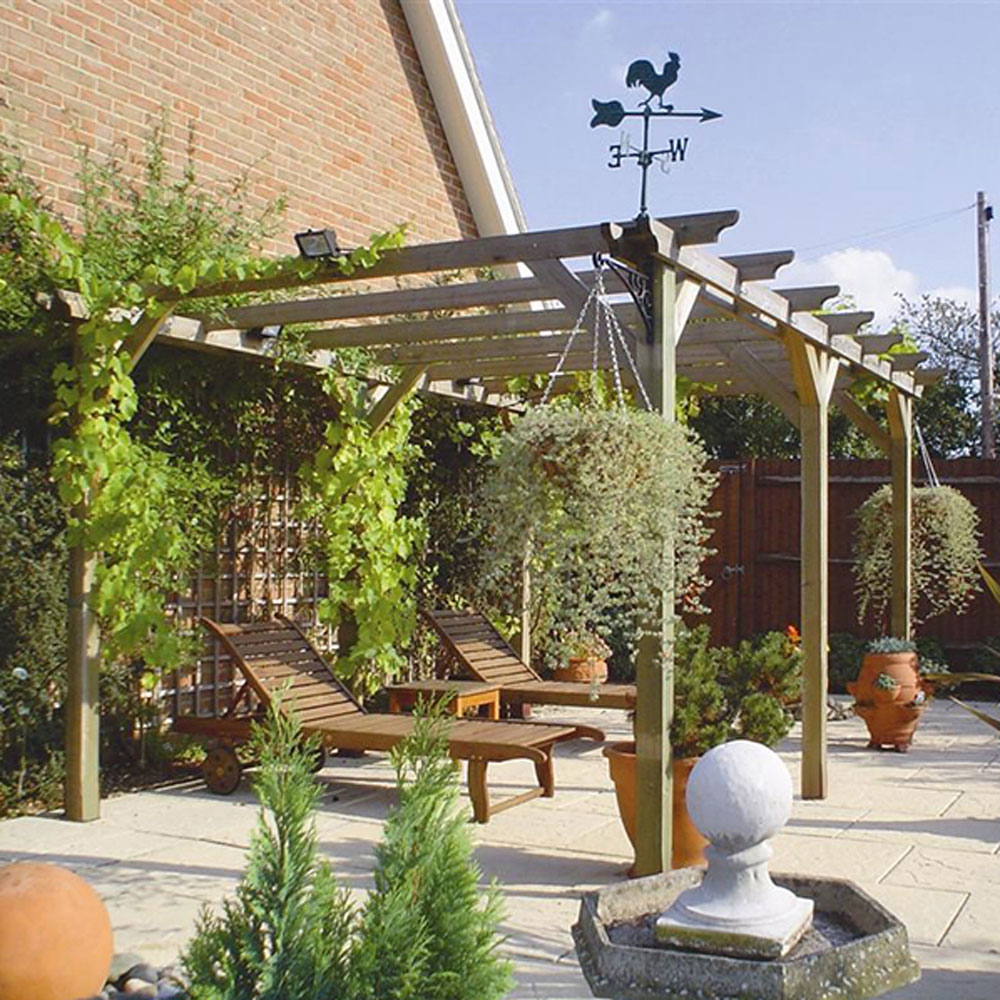 How to weatherproof a pergola – 6 solutions to get the most out of your outdoor space all year round
How to weatherproof a pergola – 6 solutions to get the most out of your outdoor space all year roundFrom roof ideas to practical upgrades, here's what the experts recommend
-
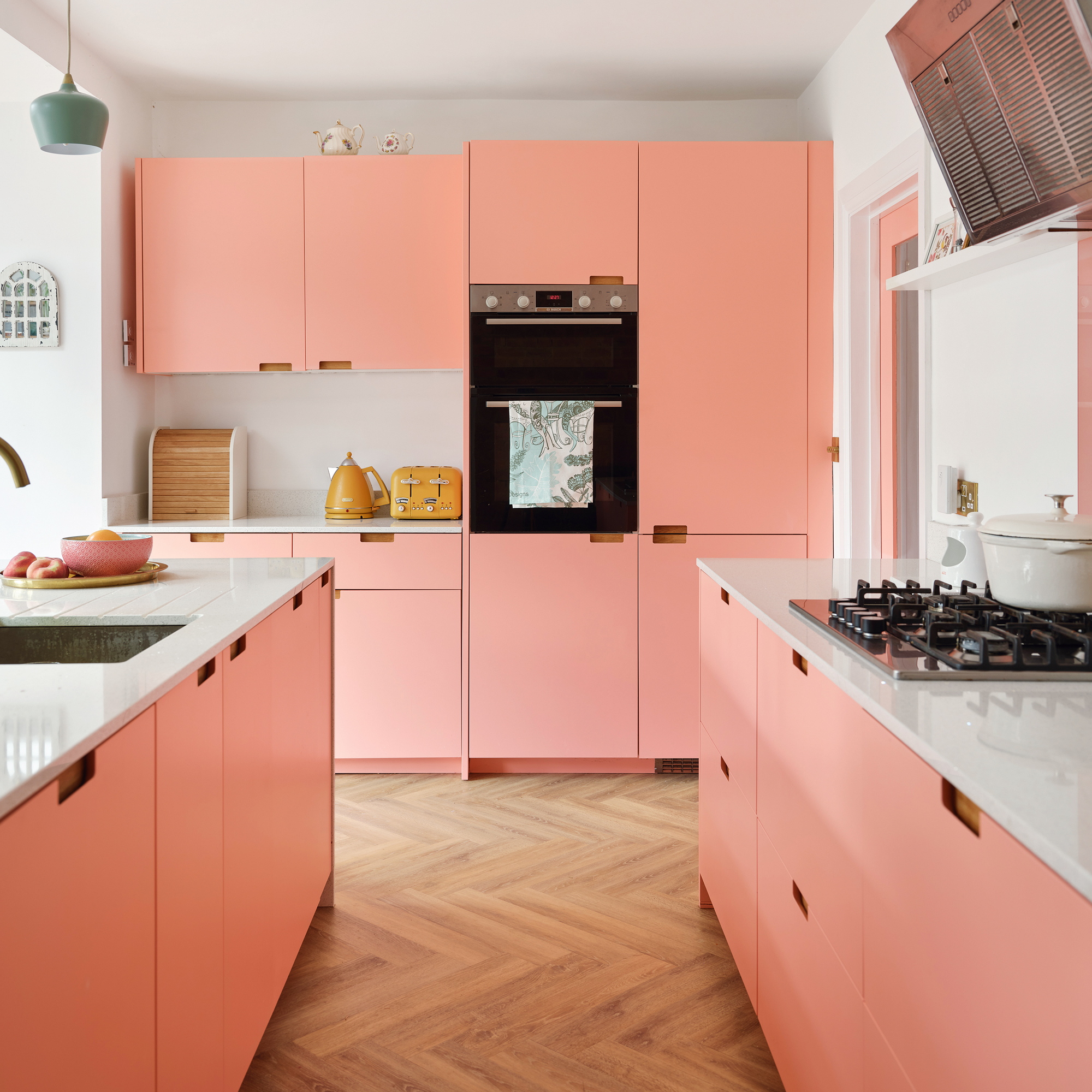 It's time to say goodbye to grey kitchen walls – paint experts say these 3 colours are best for an inviting cooking space
It's time to say goodbye to grey kitchen walls – paint experts say these 3 colours are best for an inviting cooking spaceThese three shades are the secret to an on-trend kitchen
